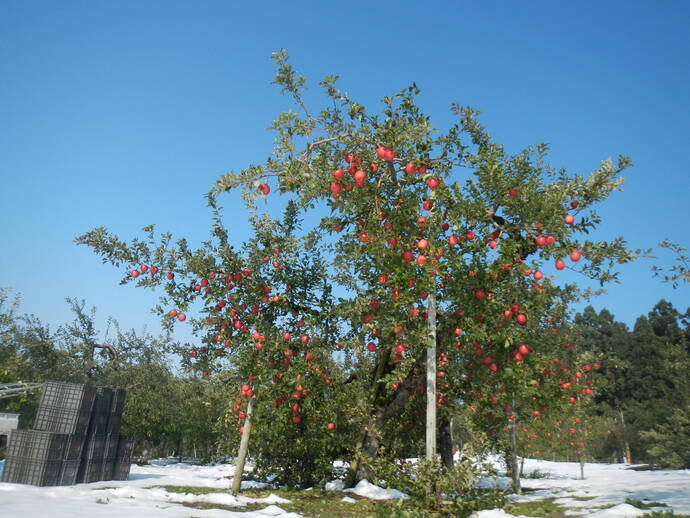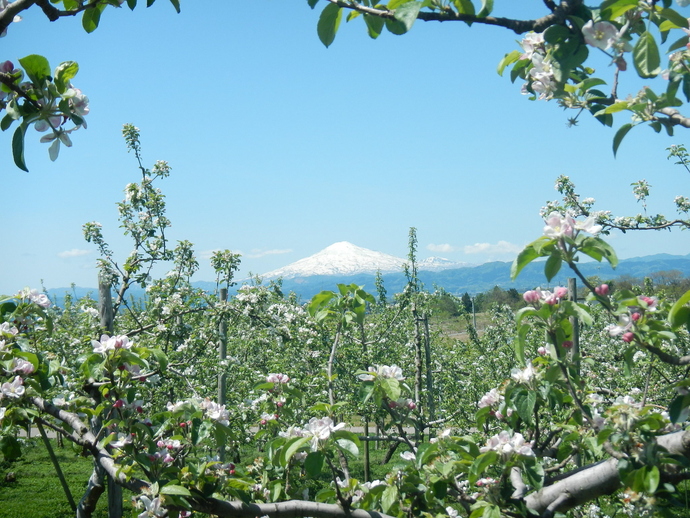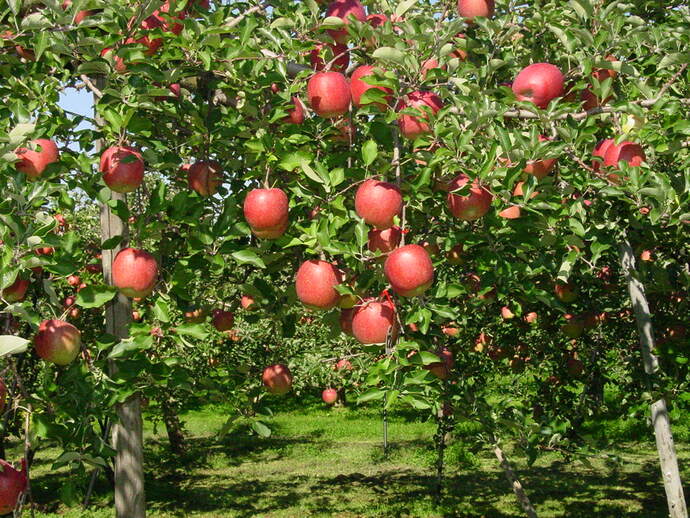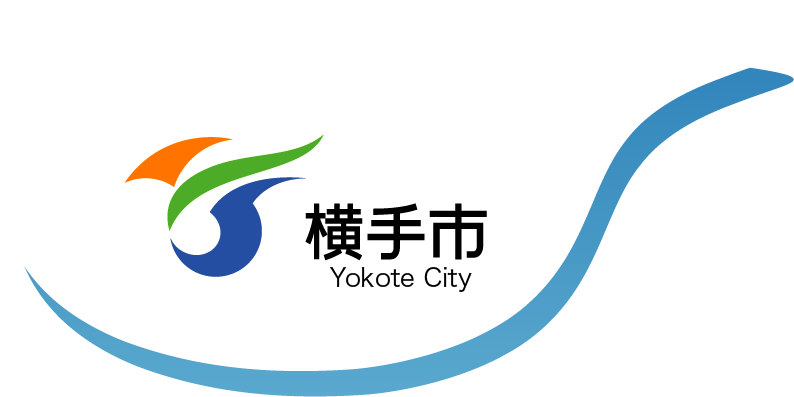Yokote’s Snow-Covered Orchards and the Story of the Sun Fuji
Yokote's Snow-Covered Orchards and the Story of the Sun Fuji

Japan’s Fuji apples, known throughout the world for their crispness and sweetness,
make up as much as 80 percent of the apples exported from Japan each year. The Fuji
apple was originally developed in Aomori Prefecture, which is still known today as the
primary source of Fuji apples. However, in Yokote—just some 150 kilometers to the
south—Fujis are grown in extreme conditions using techniques that are unique to the
region.
The Development of Apple Farming in Yokote
Apples have been cultivated in Central Asia for thousands of years, but the species of
apple that is commonly grown in Japan today was introduced from the United States in
1871. Five years later, an agriculturalist named Kenkichi Itō (1846–1908) began
cultivating the first apple saplings in Yokote. In 1892, his colleague Rikinosuke
Ishikawa (1845–1915) traveled to different areas of Akita Prefecture to host fruit fairs,
where farmers gathered to assess each other’s apples. During these fairs, Ishikawa
recorded information on the characteristics of the different apples and how they were
grown. He also began to standardize the naming system for different varieties, which
were often named differently from region to region. Ishikawa published his work as
Ringo shinasadame, a guide that farmers used to supplement their own cultivation work
and develop varieties that responded well to the local climate. This book became the
basis for apple cultivation in Akita.

The apple orchards in Yokote are nestled along the eastern hills at the foot of the Ōu
mountain range, which looks out at Mt. Chōkai in the southwest. The orchards are
planted on gentle, west-facing slopes, which ensures that the trees will not be shaded by
trees farther up the hill. As a result, the trees receive the optimum amount of daily
sunlight throughout the spring, summer, and autumn. The alluvial soil of the hills allows
rain and snowmelt to drain, keeping the trees’ roots dry and safe from rot. This is
particularly crucial in a climate like that of Yokote, where there is an average of 1,740
millimeters of rain each year and snowstorms of up to two meters are not uncommon.
Dawn of the Sun Fuji
First cultivated in 1939, Fuji apples are typically grown inside individual paper bags.
The bags protect their skins from damage by pests and prevent overexposure to
sunlight, which can damage an apple’s surface and harm the luster of its skin (called the
“finish”). Although apples grown inside bags are visually appealing, protecting them
from sun exposure affects their flavor. Sunlight causes apples to sweeten, and so the
bagged apples are sourer than apples that are left exposed.
The connection between sunlight and sweetness was not understood until 1965,
when a member of the Hiraka Agricultural Association (Hiraka Kaju Nōkyō) traveled to
the United States as part of a fourteen-member delegation to perform an exhaustive,
two-month survey of America’s apple orchards. The delegates were surprised by the
sweetness of American Golden Delicious apples, which are grown without bags.
Realizing that sweeter apples would give them a competitive edge, farmers in Yokote
resolved to adopt the bagless cultivation method that was common in the US. This
decision represented more than just a shift in cultivation methods; the agricultural
association established an entirely new brand concept that prioritized sweetness and
flavor over an apple’s appearance. The Yokote apple farms originally grew the Golden
Delicious apples brought from the US, but they spoiled relatively quickly. It was
determined that Fuji apples, which kept for longer, were best suited to the market
demand. The new, bagless variety was named “Sun Fuji” in recognition of the sun-
kissed apples’ sweeter flavor.
Apple Farming in the Snow Country
Apple farmers around the world take measures to protect their orchards from frost and
drought, but in Yokote, the apple trees are instead most threatened by heavy snows. The
average yearly snowfall in Yokote is almost 800 centimeters, on par with the snowiest
major city in the northern hemisphere (Aomori). Accordingly, preparing the trees for the
winter season is a crucial step in the cultivation process. Many varieties of apple can
survive the freezing temperatures of Akita’s winters, but the heavy snow will snap the
trees’ branches without proper preparation.

Many apple farmers utilize a growing technique in which they graft the trunk and fruit-
bearing branches of one cultivar of apple onto the roots (called the “stock”) of a smaller
dwarf variety. This creates a tree that bears fruit in large quantities but never grows
more than a few meters tall. The shorter trees make harvesting the apples much safer
and easier. Through selective breeding, apple farmers are able to create dwarf rootstocks
that grow deep and strong to prevent the trees from toppling under the weight of the
snow.
In addition to using these rootstocks, farmers in Yokote employ a variety of methods to
prevent the upper branches from snapping. The branches of smaller trees are directed
downward with guide lines. Branches that grow upward from the trunk will snap under
the weight of the snow, but branches that point downward will bend without breaking.
For the taller trees, support rods are placed under the boughs to prevent them from
bending. Keeping the trees healthy through the winter season is not easy work, but the
delicious fruit they bear is ultimately worth the labor.

This English-language text was created by the Japan Tourism Agency.
このページに関するお問い合わせ
商工観光部観光おもてなし課観光企画係
〒013-8601 横手市中央町8番12号(かまくら館5階)
電話:0182-32-2118 ファクス:0182-36-0088
お問い合わせフォームは専用フォームをご利用ください。



